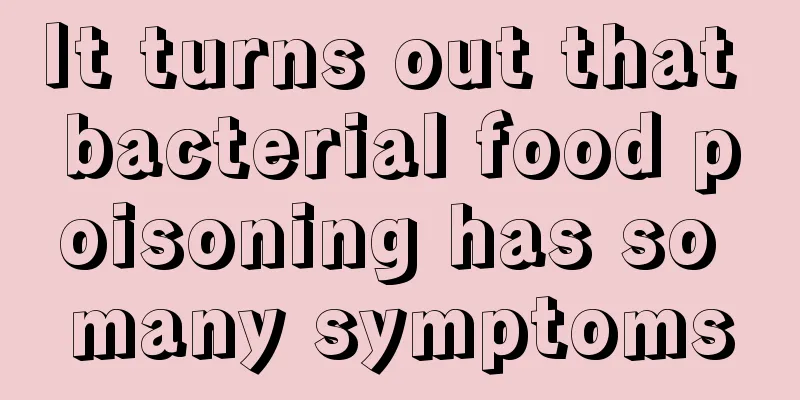What is the pain in the mouth

|
Oral pain should be considered as oral inflammation. Oral ulcers are mostly caused by oral bacterial infection, lack of vitamins or certain substances needed by the human body, which cause local oral inflammation. In addition to paying attention to a reasonable diet, eating less spicy, greasy and irritating foods, and maintaining a happy mood, you should also pay attention to the combination of work and rest, and not be too tired, so that you can heal better. Things to note in daily life: 1. Avoid spicy, deep-fried or stir-fried foods that are hot in nature, such as chili peppers, ginger, fried dough sticks, sesame cakes, biscuits, instant noodles, lamb, etc. 2. Do not be picky about food, and have a diversified diet. Eat more vegetables and fruits that are rich in vitamins, such as apples, green vegetables, spinach, carrots, etc. 3. Be cheerful, don’t always think about annoying things, play with friends more, and live happily every day. 4. Maintain a proper balance between daily life and work, take enough rest, and do not stay online all night. 5. In dry climate, you can use fresh monk fruit as tea, or use Ophiopogon japonicus, chrysanthemum, licorice and other ingredients to make boiled water. 6. Pay attention to oral hygiene and brush your teeth every morning and evening. Causes and types of oral pain Primary oral pain is pain felt by oral tissues due to direct mechanical or chemical stimulation of one or more pain receptor systems located in the oral cavity. Secondary oral pain is pain felt by oral tissues due to stimulation of a certain part of the pain transmission pathway, such as intracranial tumors compressing the central part of the trigeminal nerve transmission, causing pain in the peripheral branches. Referred oral pain is pain that occurs far from the site of pain. For example, pain in the upper teeth caused by lower tooth disease can be referred to the left mandibular area. The mechanism of referred pain may be that the impulses transmitted from the diseased area are "crossed" and cause central "misunderstanding". 1. Primary oral pain 1. Diseases of the teeth themselves, such as caries, pulp congestion, pulpitis, cracks, dentin hypersensitivity, etc. 2. Diseases of periodontal tissues: apical periodontitis, alveolar abscess, periodontal abscess, gingival papillitis, pericoronitis, etc. 3. Diseases affecting the oral skin, periosteum and fascia, such as various contusions, lacerations, burns, oral ulcers, cellulitis, abscesses, fractures, osteomyelitis, acute mumps, oral tumors, and systemic diseases such as nutritional deficiencies, endocrine and metabolic disorders, blood diseases, poisoning and allergies, etc., which cause damage to the oral cavity. 4. Diseases of the temporomandibular joint: temporomandibular joint disorder syndrome, etc. 5. Muscle disorders, myositis, muscle spasm and myofascial pain syndrome, etc. 2. Secondary oral pain 1. Trigeminal neuralgia, glossopharyngeal neuralgia, etc. 2. Intracranial tumors, nasopharyngeal tumors, aneurysms, etc. 3. Referred oral pain 1. Dental diseases 2. Nasal and paranasal sinus diseases 3. Heart disease |
<<: What is the reason for a white line on each side of the mouth?
>>: What disease is a salty mouth a sign of?
Recommend
What are the symptoms of breast cancer recurrence
Breast cancer recurrence can seriously trouble br...
How to use diapers without them falling off
Many mothers always use diapers improperly for th...
Introduction to health care methods for bladder cancer. Please pay attention to
Many patients with bladder cancer are eager to tr...
Benefits of kneeling on your knees
People who often watch costume dramas should know...
How to effectively protect against radiation?
Nowadays, electronic products such as computers a...
Can't people with thyroid cancer eat sweets?
Thyroid cancer patients can eat sweets. Thyroid c...
How to preserve fresh Gastrodia elata
Fresh Gastrodia elata is delicious and nutritious...
What can’t be eaten with frozen persimmons
There are many hotly debated topics in today’s so...
How to eliminate the eye bags that have already formed
Eye bags are a common facial manifestation. When ...
Clinical manifestations of teratoma
Teratoma is a very small tumor that does not caus...
What medicine is good for gallbladder pain
The probability of problems with the gallbladder ...
How long can patients with mid-stage lung cancer usually live? It depends on the type
Regarding the survival of patients with mid-stage...
Can pregnant women use ginger shampoo?
Using ginger shampoo to wash your hair can effect...
What are the effects of using iron leaves to wash hair
There are some common wild vegetables in the coun...
What are ground-glass nodules in the lungs?
Ground-glass nodules in the lungs are a not uncom...









